I still remember the condition that was put by our first chief officer for us to enter wheelhouse and keep a watch with him. The condition was that we should know each rule of the road word by word. 18 years later, while writing this post I realize how appropriate his condition was.
When it comes to navigation and watch keeping, to be crystal clear about COLREGS is undoubtably the priority. It takes several watches to be kept under the guidance of an officer to be clear about these rules.
Problem is that we have nowadays moved from having a trainer to self training. Officers on board a ship are overloaded with their own work and so do not have time to train their juniors. In these cases, junior officers have to work on self training.
In this post we will discuss in detail 8 rules every watch keeper must know. But before we move to the rules, we must know the sections in which COLREGS are divided. This is important because not all the rules are applicable in all the situations. For example rules under Part B, Section II are only applicable when you can visually see the other vessel. So we should know which rule is applicable under which condition.
Sections and parts of Colreg
Rules of the road are divided into Five parts. These are
- Part A: General
- Part B: Steering and sailing rules
- Part C: Light and shapes
- Part D: Light and sound signals
- Part E: Exceptions
Recently in January 2016, there is another part (Part F) that has been added in the COLREG. This part deal with the verification of compliance which is not directly related to the seafarers.
Rules of part B are further divided into 3 parts based upon the state of visibility.
While all the rules are important, rules under part B (Steering and sailing rules) are the one that each seafarer must know at all the times. Here We will discuss some of the rules
Rule 5: Look out
If I want my ship staff to follow only one rule, I would ask them to follow rule number 5. In my opinion this is the most important rule in the entire COLREG. All other rules are based on the fact that we are aware of our surrounding. But if we fail to keep a proper look out, we would not be able to apply other rules too.
All this rule asks the watch keepers is to be vigilent by keeping their eyes and ear open. It emphasizes on three things
- By sight and hearing. Which off course means that watch keeper need to keep look out not only by sight but also by hearing. By hearing means continuously listening to VHF and distress frequencies as well as any sound signal.
- By all available means. This means that a watch keeper need to use all resources available to keep a look out. These resources can be VHF, AIS, Radar and ECDIS to name a few.
- Appraisal of situation and risk of collision. This should be the ultimate target of the watch keeper to keep a look out. A watch keeper need to look out to find any risk of collision with any vessel. Also the watch keeper should know the present situation he is in. He should also be proactive in assessing the situation he would be in after sometime. For example, he should take into account the general traffic route (such as in TSS) which may have the other ship alter her course much before TCPA.
Rule 7: Risk of collision
A good look out by sight, hearing, Radar and other available means will not miss out any targets. The next important factor of a good watch keeping is to determine if risk of collision exists.
Rule no 7 gives the guidelines on how to determine if risk of collision exists.
Risk of collision shall be deemed to exist if the compass bearing of an approaching vessel does not appreciably change.
- Approaching vessel means the distance should be decreasing and
- Appreciable change means that change in compass bearing by 2-3 deg would not mean that there is no risk of collision.
Rule 7 also warns the watch keepers about the assumption made on scanty information specailly scanty radar information.
The words Scanty information means small or insufficient information. That means the watch keeper must not assume that there is no risk of collision based upon insufficient information. Insufficient information may include
- Assuming no risk of collision just by visually sighting the target without conforming the change in compass bearing
- Assuming no risk of collision basis radar showing 0.3~0.5 NM CPA. Watch keeper should not assume that CPA shown in radar is always accurate.
- Assuming no risk of collision without conforming if the target is passing ahead or astern of own vessel. On most of the radars this is shown as BCR (Bow crossing range). If the BRC is showing empty, it means the target will pass stern of own vessel. A target passing ahead of own vessel at close range is considered more risky than a target passing stern of own vessel at close range.
- Assuming no risk of collision for a vessel at long range (more than 12 NM) on radar. CPA shown on radar for a target at long range will often have error. While Colregs recommend long range scanning on radar, assuming no risk of collision for targets at long range can be risky. 6~8 NM is a good range for assessing risk of collision. Even for targets at 6~8 NM range with no risk of collision, watch keeper need to keep monitoring until these have passed clear.
Rule 6: Safe speed
Safe speed is the most mis-undertood rule in Colreg. Let me ask a question. Which of these two vessels in Singapore strait at same location are proceeding at safe speed
- A container vessel moving at 16 knots or
- A bulk carrier moving at 15 knots
What is your answer ?
If I have to choose one, for me the container vessel moving at 16 Knots is moving at safe speed. Isn’t it interesting to say that a vessel proceeding at higher speed is safer speed ? If you understand why I chose container vessel as proceeding at safer speed, most likely you already understand this rule.
So why I chose container vessel as proceeding at safe speed ? This is because
- Container vessel is not proceeding at sea speed and has her engine ready for immidiate manoever. Whereas bulk carrier is proceeding at sea speed and would need some notice before they can reduce speed.
- Container vessels have better manoeverability compared to bulk carrier. So in case of an emergency, container vessel can manoever quickly than bulk carrier.
The whole idea behind safe speed is not to not to run into danger because of high speed. Lesser speed gives us more time to assess situation and take effective action.
The safe speed depends upon 2 factors
- How early a target can be detected
- How effective the avoiding action will be
All the factors mentioned in the Colreg rule number 6 either affect target detection or the effectiveness of the avoiding action.
Rule 18: Responsibilities between the vessels
While this is a simple rule which list down the vessels in order of priority, sometimes we can get it wrong. I have seen watch keepers getting irritated with the fishing vessels impeding their passage. We must know that it is power driven vessel who has to keep clear of the fishing vessel and not the other way around.
Rule 15: Crossing situation
When two power-driven vessels are crossing so as to involve risk of collision, the vessel which has the other on her own starboard side shall keep out of the way and shall, if the circumstances of the case admit, avoid crossing ahead of the other vessel.
This rule is simple. In a crossing situation with risk of collision, if you have a vessel on your starboard side, you are the give way vessel. In same situation if you have a vessel on your port side, you are the stand on vessel.
This rule also guides about what action a give way vessel need to take to avoid risk of collision. It asks the give way vessel to avoid crossing ahead of the other vessel. More often this can be achieved if the give way vessel alter her course to starboard.
But can the give way vessel alter her course to port ? The rule uses the words “If the circumstances of the case admit“. Which means that if the circumstances do not allow, the give way vessel can in deed cross ahead of the other vessel by altering her course to port. These circumstances can be when
- there are number of vessels on the starboard side of the give way vessel. In this case altering her course to avoid one situation can lead to another close quarter situation.
- There are number of navigational hazards on the starboard side of the give way vessel. In this case altering her course to starboard can lead her to danger.
While rule no 15 does not prohibit altering course to port, this should only be done if it is completely unavoidable. And if you are passing ahead of the other vessel, you should not do this in the last minute. This should be done well in time and your intentions should be known to the other vessel.
Rule 14: Head on situation
This is the easiest rule in the Colreg but a must know by all watch keepers. When in head on situation, each vessel alter her course to starboard side. It is as easy. A little trick however is in the definition of the head on situation. For example in rule 14, pay attention to the words Reciprocal or nearly reciprocal, “ahead or nearly ahead” and “in line or nearly in line”.
These three terms are what differentiate head on situation from crossing situation. But what does nearly means ? Or rather how many degrees nearly means ?
Nearly is again a very relative term. For example if you are on a course of 000 Deg, what would be the limit of nearly reciprocal course of target vessel ? 178 Deg, 175 Deg or 170 Deg ??
Frankly it would be a challenge for anyone to answer that question. But we do not need to know the answer. Whenever you are in any doubt if it is head on situation or crossing situation, you need to assume that it is head on situation. Why ? Because rule no 14 (c) says so.
Rule No 13: Overtaking situation
When we were appearing for 2nd mate’s competency exams, there was this one COLREG question that was hot cake.
A NUC (Not under command) vessel is overtaking your vessel (power driven vessel) with risk of collision. Who is the give way vessel and what action you would take ?
Many would be tricked by this question with the presence of NUC vessel. Many would think that NUC vessel has some limitations and we would need to keep clear of the NUC vessel.
We may even apply Rule no 18 (responsibilities between vessels) to support our belief that NUC vessel is the stand on vessel. The answer to the question lies in the first sentence of the rule 13 (overtaking situation) which says
Not withstanding anything contained in the rules of part B section I and II…..
In simple word this one sentence means that it does not matter what other rules in part B section I and II say, this rule takes the priority. Rule 18 falls under “part B, section I and II” and so for overtaking situation it does not apply.
Even the first sentence of rule 18 clarifies this, which says
Except where rule 9, 10 and 13 otherwise require ….
Now what is overtaking situation ? As per rule 13,
A vessel shall be deemed to be overtaking when coming up with a another vessel from a direction more than 22.5 degrees abaft her beam, that is, in such a position with reference to the vessel she is overtaking, that at night she would be able to see only the sternlight of that vessel but neither of her sidelights.
So as per rule 13(b), See below difference between an overtaking situation and a crossing situation. Do you agree ?
Everything seem alright upto this point. But any vessel which is crossing from abaft the beam may have been in the overtaking zone at some point of time.
In our example, see what would have been the situation few minutes earlier. So is this an overtaking situation or crossing situation ??
I mean what is the time when we need to make the assessment if the another vessel is 22.5 degree abaft the beam or not ?
Overtaking rule falls under Section II of Part B “When in sight of one another”. The visibility of stern light is 3 miles. So we need to need to assess the situation at 3 miles. We do not need to wait till the vessels are at 3 NM distance but we can make the assessment if at 3NM the other vessel will be 22.5 deg abaft the beam or not.
But as the rule 13(c) points out, if the overtaking vessel in doubt she need to assume that this is overtaking situation.
Rule 19: Restricted Visibility
The compliance with rule no 19 is based upon two situations.
- Situation where target is detected by radar alone
- Situation where sound signal is heard
Situation where target is detected by radar alone and risk of collision exists.
In this situation, action to avoid risk of is also divided into two situations
- Target vessel forward of the beam.
- Target vessel abeam or abaft the beam
For target vessel forward of the beam, alternation of course to port need to be avoided, other than vessel being overtaken.
For target vessel abeam or abaft the beam, alternation of course towards the vessel need to be avoided.
Lets see each situation and action that we are required to take.
Situation where sound signal is heard
Watch keeper need to worry about the fog signal heard forward of the beam. In case a fog signal is heard forward of beam, we should reduce our speed. If we think that risk of collision still exists, we should reduce speed further upto where vessel can be kept on her course.
We also need to address what visibility is restricted visibility ? If the visibility is 3Nm, will it be considered as restricted visibility ? What about 2NM or 4NM visibility ?
Let me put it in another way.
Visibility is around 2NM and on your radar screen you plot a vessel which is head on at 6NM on reciprocal course. Would you take action as per rule 19 (restricted visibility) or as per rule 14 (head on situation) ? I bet your answer is rule no 19.
Assuming both vessels did not take action and now the vessel is at 2.5NM and you could see the vessel visually. The vessel is still on collision course. Now will you take action as per rule 19 or rule 14. Remember we are still in area of restricted visibility where visibility is around 2NM. This one is tricky and we will come to the answer later.
Another situation is that in one part the visibility is 2NM and another part the visibility is 5NM. Will you apply the rule 19 or rules under “in sight of one another”.
Well, I have asked enough questions. But I asked all the questions in one go because all these questions have one answer.
And the answer is it does not really matter if you will apply rule no 19 or other rules. Actions required under rule 19 does not contradict actions as per other rules. Let us assume that in restricted visibility, when in head on situation at 2NM both vessel take action as per different rules. That is you take action as per rule 19 and target vessel take action as per rule 14.
So what will be action by both vessel. If you notice action as per rule no 19 will be “Not to alter course to port”. And action as per rule 14 will be “Alter course to starboard”.
Conclusion
Understanding of the rules of the roads is the first requirement of being a navigating officer. If our understanding of these rules is crystal clear, half the battle is won. While all the rules in COLREG are important, these 8 rules we discussed above are top most priority. Once we know these rules and what is expected out of us, we can be sure of keeping a safe watch.
Share this:

About Capt Rajeev Jassal
Capt. Rajeev Jassal has sailed for over 24 years mainly on crude oil, product and chemical tankers. He holds MBA in shipping & Logistics degree from London. He has done extensive research on quantitatively measuring Safety culture onboard and safety climate ashore which he believes is the most important element for safer shipping.
Search Blog
133 Comments


Very useful . Thank you

Glad that you found it useful Vivek..

Good article. Nice to know someone has taken time to to enlighten others selflessly. Safe seas everyone.

Thanks for the kind words Hardeepak..

have a look at www.cultofsea.com , i think they both should merge

Fantastic explanation ...

Glad you liked it Sachin..

colreg simplified in a very simple language...very useful...liked it..

Glad you liked it Mithilesh..

Good day sir , kindly explain action in RV to be taken by a power driven vsl with inoperational radar on hearing a fog signal which is apparently coming from astern.

In this case.. No action is required. We need to maintain our course and speed.

Sir how can we justify this action to a surveyor when asked in MMD.. as this action is not mentioned clearly in ROR?

A very useful and important for Freshers like me .... Thank you so much ..!! ✌️✌

Happy to help.. Let me know if you have any questions anytime..

can i ask a quetion sir, can u alter course to port?

Vry vry useful sir.

Glad you found it useful Paras..

Hats off to you Capt Rajeev. I appreciate your efforts, time and hard work to assist shipping fraternity, especially to our upcoming young seafarers. Kindly keep it up !!!!!!

Thanks a lot Capt Sanjay. Your kind words will definitely help me keep going..

sir in rv if one vsl is coming down from forward of beam and one vessel is coming from abaft our beam in starbord side..what we should do in this situation??

Mithilesh, COLREGS gives us actions to take in individual situation. If we have more than one situation to handle, we need to use our seamanship skills to handle that and while taking action in these situation, we need to make sure that as far as possible we do not contradict the ROR. In this condition, there can be number of solutions. We can reduce the speed to allow the vessel abaft the beam to overtake us early and then alter course to starboard to clear the vessel forward of beam. We can even depart from Rules if the situation warrants that but the departure from the rules should be unavoidable. For example we can ask the overtaking vessel to alter more to starboard and then we can alter to starboard for the vessel forward of beam. A good seamanship should also assess the TCPA of both the situations and give priority to the situation with lesser TCPA.

sir, i really appreciate ur effort to guide us...ur suggestion is really very very helpful...hats off to your effort.

in rv if i hears a fog signal forward of our beam with operational radar then what we should do??.........and if in same situation if radar is not operational then what action should we take?? will our action differ in both situation or we should stop our vessel in both situation...plz clarify...

If you do not have a operation radar and if you hear a fog horn, the problem is that you would not know where the target is heading or what her course is. The range of fog horn is not much and if you have heard that, the target is nearby and if you continue moving with faster speed, you may not have time to take avoiding action when you realise the more accurate location and movement of target vessel. Reduction of speed just gives you more time to assess the situation but it may increase or decrease the CPA. After reducing the speed in this case, we need to continue to monitor the situation. We always have AIS and VHF with which we can identify and communicate with other vessel after reducing the speed. In practical situation we need to be careful to reduce speed when we hear fog horn on our port side forward of beam as if the other vessel alter her course to starboard, our reduction in speed will nullify that and there will be no change in CPA. With operation radar ROR gives us exact action to follow because then we know what the other ship is doing.

very very usefull, thanks soo much sir.. again remainder for squat cal, UKC avail , those related topics required.

Glad that you found it useful Karthick.. I will write on UKC/Squat very soon..

Why not u put all the colreg rule like that it helps the cadet who preparing themselves for 2nd mate make a lot .plzz i request u to post all 38 ror rules like that thanks in advance

Thanks Mani.. I have some other topics in line but I have put your suggestion in list and will post it soon..

Blog is very informative, just for your info there is amendments in COLREGS where part F is added (Verification of compliance), which has rule 39,40,41

Glad you find it informative Abhijit. Yes the Jan 2016 amendment I did not add as these were not related to seafarers but I will better include it to avoid confusion.

Sir plz give explanation for what visibility is restricted visibility? If the visibility is 3Nm, will it be considered as restricted visibility ? What about 2NM or 4NM visibility ?

There is no fixed range of visibility that can be termed as "restricted Visibility". Even rule 19 describes its applicability to "in and near the area of restricted visibility". As I said in the blog that we do not really need to define the range as the actions required in case of Restricted visibility and in case of "in sight of one another" do not contradict with each other. Even with 3NM visibility, you might be able to spot an incoming vessel but at the same time the other vessel might not be able to spot you in fog. For you it is "in sight of one another" situation and for other vessel it may be "restricted visibility" situation.

Hi Rajeev. Good work. May I dare to differ on your following comment from the above article, regarding the crossing situation? "This rule also guides about what action a give way vessel need to take to avoid risk of collision. It asks the give way vessel to avoid crossing ahead of the other vessel. That is only possible if the give way vessel alter her course to starboard." I think an alteration to port needn't always result in crossing ahead- alteration to port is no offence- crossing ahead is. It may well be the best action to take especially if the stand on is approaching from near about the starboard beam. Your comments? Thanks, Anand.

Hello Anand. I like to be corrected and thanks for that. You have made a very good point. I will revise the wording. Just one point. Even crossing ahead may not be an offence if it is not avoidable in the circumstances as it uses the word "Avoid" and not "Shall". But off course in case of a collision, the onus to prove the circumstances will remain on the give way vessel. Thanks for contributing to it Anand.

Thanks for your response Rajeev. I cannot disagree with the latter part of your message and your point is taken. However, I am of the opinion that a lot of us navigators are all too keen to resort to Rule 2 to justify departures from the Colreg, far too early. I think that all resources/ options should be exhausted and the danger be immediate, before falling back on Rule 2. ...I should stop about now. Great work none the less and good luck with all else. Warm regards, Anand.

Thanks for your comments Anand.. And you are absolutely correct about Rule 2..It is never easy to justify departure from COLREG as per rule 2. And if even after departure from COLREG, collision still happened, it is impossible to justify the departure from COLREG as per rule 2.

Thanks alot for your sir .plplease explain me the difference between underway and making way

Underway is when a ship is floating in water but not using engine. Making way is when the ship is using engine and making way through water.

"A NUC (Not under command) vessel is overtaking your vessel (power driven vessel) with risk of collision." Captain, Risk of Collision (ROC) is not a stated element of Rule 13, it is with rules 14 and 15 but paragraphs (a)-(d) make no mention of ROC. Maybe it was in the question to signify urgency, but regardless of ROC, it is still an overtaking situation

You are right Frank. ROC is mentioned to signify the situation where an action is required. If there is no risk of collision, there is no action required and hence it hardly matters if the situation is overtaking or crossing situation. But you made a very good point about ROC. Thanks.

Hi Rajeev, in my understanding, wherever the term ' Shall keep out of the way' is used, it implies that a risk of collision exists. And wherever the term ' Shall not impede the passage' is used, it implies that their is no risk of collision. So when u talk of an Overtaking Situation, it automatically implies that a risk of collision as determined by Rule 7 exists

Sir i further request you to plzz update more no of colreg like that bcoz u explain in such a way its very easy to understand , thnx once again sir

Thank you Mani.. Yes I will write on other rules too..

can i ask a question can you alter course to port?

There is nothing in the rules that says you cant alter course to Port, every action is treated on a case by case basis. if you think it is safer to alter to port then go for it. the only time where the rules suggests otherwise is in Rule 19 where it says avoid altering course to port for vessels forward of the beam, and in rule 17 - action by stand on vessel, where it says an alteration towards the other vessel is to be avoided. once again the rules will never say you "CAN'T" do something. Hope this helps

Good day sir its truly useful for all of mariners all around. Kindly put some light in a situation : a NUC crossing own P/d vsl following a traffic lane in TSS from our stbd side.. can we apply rule 18 here? as rule 10 nothing mentions about nuc. If so, then what about the first line mentioned in rule 18 "except anywhere" ? can rule 18 b still used after exceptions? thanks hope to see ur reply soon

Yes, we need to apply rule 18 here. First line of rule 18 says, Except where rule 9,10 and 13 otherwise require". So Rule 10 does not require NUC to be clear (it does not mention anything about NUC) so rule 18 would apply.

sir can u please elaborate on this why we can use rule 18 when it is clearly mention at starting of rule 18 only except rule 9,10and 13

Rule 18 says, except where rule 9, 10 and 13 otherwise requires. So rule 18 does not always supersede these 3 rules but only if it is specifically mentioned in these rules. In rule 10, there is no mention for NUC vessel to keep clear so rule 18 will apply.

Rule 10 (A) which confirms that vessels using a TSS are not absolved of their responsibilities under the other Rules. This means, that at the end of the day, the Steering and Sailing Rules still apply, when navigating within a TSS.

SIR, KINDLY CLARIFY THAT ARE ALL TOWING VESSELS ARE RAM VESSELS SPECIALLY TUGS TOWING BARGE.

As definition of RAM says, a towing vessel will only become RAM if the tug and tow has any restriction to alter their course. For example in case of restricted width of channel.

Great initiative taken..Very helpful material!!!

Thanks Rahul..

well explained, thank you for taking efforts to explain.

Thanks Gurpreet...

Hello Capt Rajeev, What about the definition of NUC as per rule number 3 that the vessel which through some exceptional circumstances is unable to manoeuvre as REQUIRED BY THESE RULES, the definition lies under Part A of colregs (General), does that mean it applies to all the rules coming up next in COLRES ?? and if so does that mean that the i should keep clear of the NUC at all times as she is not able to manoeuvre ( Give way ) as required by the Rules including where she is overtaking me ?

The first line of the rule 3 says "....Except where the context otherwise require". For the overtaking situation, the rule and the context of the situation require NUC vessel to keep clear and hence it is the responsibility of the NUC vessel to keep clear.

Thank you captin for the explanation..

You are welcome Shamy..

Very useful blog Sir, In the overtaking situation where own vessel is PD and NUC is overtaking us. ROC exist and if the NUC vessel is not taking any action , then our action as per Action By Stand-on Vessel??

In the overtaking situation, NUC vessel does not get any preferences. So if NUC vessel is not taking action and the first action would be to draw her attention. If still no action then we can alter to the side opposite to the side from which the NUC vessel is overtaking.

One more doubt sir , Own vessel is PD and CBD is crossing us from Port side. ROC exist and range is about 5m , In this situation which Rule comes in place Rule 18 or Rule 15, Because as per Rule 3 CBD is PD vessel , And as per Rule 15 (when two pd vessel are crossing...). In this situation if CDB is not taking any action then Our action is as per Rule 17 or 18.According to Rule 17 we are stand-on / and Rule 18 says we are give way.

Rule 18 is applicable over all other rules in that section except Rule 9, 10 and 13. So in the case of CBD crossing our vessel, we shall avoid impeding the safe passage of the CBD vessel.

Very usefull..great stuff

Thanks, Karam...

hello sir, still there I receive many doubts about underway, and making way for a powerdriven vessel so could you clarify it. and one more sir, if our vessel had some engine problem and we commenced to drift we put on our NUC light can we or can we not put on our stern and side lights . "and many thnks for ur clean cut explanations "

In my opinion, till the time the vessel has significant headway, she would be considered as Making way.

hello sir, still there I receive many doubts about underway, and making way for a powerdriven vessel so could you clarify it. and one more sir, if our vessel had some engine problem and we commenced to drift we put on our NUC light can we or can we not put on our stern and side lights . "and many thnks for ur clean cut explanations "

Hello sir, I have question abut 2nd officer promotion, What is the different between 2nd officer and 3rd officer in cargo watch? thanks

And I have another question about chart, from which chart we never can use for passage plan? I mean abut cancel chart.

I am having difficulty signing up in the window pane in this webpage to get more lessons on shipping, is it working correctly? I would like to sign up as this is all very well put together so thank you.

Yes, it working Chris. If you finding any difficulty signing up, can you please send an email to support@myseatime.com with the issue you are facing.

Dear sir! Inoperational radar, how will you make out if vsl is overtaking. Surveyor is not satisfied with taking Consequtive bearings or taking range for ais// so wat could be the best and to satisfy him,, thanks in advance

I think it is with increasing intensity of the sound signals...

Very helpful sir ...... it actually change my view of understanding 'ROR' and assessing situations.

Glad you found it useful Danish...

Thank you very much sir for making understanding everything.i request to Write some practically precautions that we will take on board tanker during operations. It will help me in my 2nd mate oral examination. I will be glad if possible to email on my email id. Thank you sir.

I will write on that Mahi.. FYI, I do have some already on the topic like Framo pumps, Static electricity etc. You can check those out..

Sir very usefull i want to know we are power driven vsl and there is fishing vessel on starboard and it is crossing and we are on collision course what action we will take and we are in tss

Captain, thank you from a lifelong offshore sailor for taking the time to illustrate these rules clearly and concisely, including some tricky cases...having read and re-read, even memorised COLREGs can be quite different from understanding and applying them properly in live situations, I hope many commercial ship watch officers, and many more leisure seamen read you...I will gladly read your other articles and direct others to this blog, thanks again.

Thank you Sir for your kind words and support...

Sir i ll b glad if u can make us understand rule 8 f 1,2,3...

Captain,the rules have been well explained buttressed with very good questions.It has really enlightened me in different context to understanding of these Rules.Thank you soo much and may this blog continue to bring solutions to the seafarer.

Sir, If a Fishing Vessel is Constrained by Draught then what lights should it be exhibiting??? Fishing Vessel Lights or CBD lights

Thank you so much sir for clearing my doubts.

Hello sir, kindly advise what if we are in narrow channel and one sailing vessel coming from our stbd side entering the channel and at the same time one pdv is head on.

Keep always stbd side of the channel ,sailing vsl shall not impede your passage ...you can give 5 rapid short blast to sailing vessel as she is give way in this situation...Regarding the PDV Rule say she will keep to the stbd side of the channel...proceed with a safe speed an do remember your maneuvering characteristics and stopping distance of the vessel.Its Sailing vsl responsibility to keep clear in narrow channel as per Colregs.

Very useful sir. I learned alot.

You are best sir.

So sir if NUC is overtaking vessel then is she also a give way vessel?

Rahul NUC is give way.....Maintain your speed and course with caution....if she come s in closer range give 5 rapid short blast its her responsibility to keep clear...Rule No. 13 Over rides all the way...else you can go to either side if she continue comes close to you ....

Thank you for the simplified actual representation of the Regulations. Hope to hear more from you.

Sir,which are the rules we want to by heart?

First of all Thanks a lot sir. I have a doubt if a nuc or ram crossing the tss what action we will take and according to which rule?

Hello Sir, Thank you so much for the exolanation. Sir, in my oral i was failed bcoz surveyor asked me a question, Tgt vsl on port bow.Range 10 mile on radar, RV, crossing , action? My ans was i will monitor the vsl by radar and as per u the range is 10 mile, so i will maintain my course and speed. And in RV there is no give way and stand on so i will maintain the cpa as per company policy and pass well clear. But i was failed. Can u plz help me regarding this.

Sir , could u plz advice how to go about the situation when vsl cbd crossing tss from port bow and she is the target vsl and my vsl is pdv , what rules will be applicable??? And is rule 18 is applicable here in tss and narrow channel

Good day sir, own vsl RAM , Target vsl CBD crossing from my port side , ROC exists.which among these will act as stand on & which will be give way vsl ? action?

Good day Sir, your explaination is understood easly. Please explain me with pleasure about sound signal one prolonged blast, one short blast, one prolonged blast, one short blast. Is that sound signal only used both in narrow channel and fairway? I don't get good Idea about it. Thx and be Blessed

Beautifully crafted notes. Not only this one but i read your other notes too. Really admirable!! Imparting knowledge. Great work sir.

You missed one very important piece on information in Rule 5.... and that is the 1st sentence... "every vessel shall at all times"

Thanks

Very good and useful explainations. can you send me please in pdf to print and keep?

Very good and useful explainations. Can you send me in pdf to print and keep?

A lot of thanks , sir for giving us such a precious information.

good day Sir. how many miles or on what distance both vessel in a head on situation shall alter their course to starboard...

3 miles

fishing vsl crossing TSS on my port side& also in narrow channel.who is give way & whose stand on vsl.since rule 10 says all rule applies.fishing vsl shll not impede passage but in rule 8 f(i) its doesnt say that fishing vsl keep out of the way.(as per rule 16-its clearly mention keep out of the way).plz clarify sir.

Thanks for the explaination. I have a doubt as in exams they r asking situations with multiple targets. So do we have to take account of the targets action as well before taking action for mca exams. Kindly advice. Eg. You have a target fwd of your beam on port bow. So as per 19 we can overtake on either side P or Something. But if we think of that target it shall not alter to stbd as we r on stbd abaft her beam in this case our answer should be broad alteration to stbd. Please advice. Thanks

Very good explanation.i also learned all explanation.but I have one question sir ,one surveyor ask me....how will u determine vsl is crossing..I said which vessel pass from Port to stbd or stbd to Port and I also told I'll check the aspect of that vsl .but he not satisfied.can u tell me ans sir how I'll determine vsl is crossing

Can we alter to Port in any situation?

Sir please can you clarify the meaning under rule 18: EXCEPT WHERE RULES 9, 10 AND 13 OTHER WISE REQUIRE does it apply / not apply / partially apply to rule 9, 10 and 13. If it applies partially then do we need to consider rule 18 when a vessel is crossing narrow channel or tss.

Sir rule no 15 is applicable in narrow channel.?

Good morning sir , I am sure u doing good.. Sir I want to know that , is the rule 18 will apply in narrow channel and tss...?

Good Day sir. I have a question for you. When do you depart from the rules??

Thank you for providing such great information. Please find the details below for uk officer of the watch course

Nicely explained. Thanks sir.

According to Value Market Research, the latest technology trends and global market opportunity analysis in the Marine AIS Monitoring Solution Market industry growing with a high CAGR in the upcoming year. Our report has categorized the market based on technology, service, development, vertical and region. https://www.valuemarketresearch.com/report/marine-ais-monitoring-solution-market

What an explanation sir! My journey is starting now as an Junior officer and for that I cannot get anything better than this! Thanks a lot

Dear capt, Rajeev i have question regarding Restricted in her ability to manuever lights . My vessel is oil/chem tanker 8540 GRT. 1. Why my vessel no have fix light of RAM lights. Only NUC and christmass tree lights only 2. The inspector said we should have portable lights for RAM if it is not fixed in the mast .. 3. The vessel should have this lights being hoist ? Please give me guidance regarding with this matter.

Dear capt, Rajeev i have question regarding Restricted in her ability to manuever lights . My vessel is oil/chem tanker 8540 GRT. 1. Why my vessel no have fix light of RAM lights. Only NUC and christmass tree lights only 2. The inspector said we should have portable lights for RAM if it is not fixed in the mast .. 3. The vessel should have this lights being hoist ? Please give me guidance regarding with this matter.

your blogs are very helpful sir.. pls sir keep writing on different topics

Hi, is this rule document available in PDF form? it would be really helpfull for my oral exam

Thanks for the explanation. Explained very well. Appreciated.God bless you.

great article! I enjoyed this one.thanks. keep it up http://www.semiroadside.services/

This is very informative also attractive topics. it is help use smartwatch.smartwatch

It’s a great and useful piece of info. I’m happy that you just shared this useful info with us. Please stay informed like this. Thank you for sharing. Here’s another informative content on Failure to Remain at The Scene of An Accident, find more details here.

Very simple,understandable but informative information.I'll be sharing this wonderful work to my fellow students. I hope more of this will come

My ex-husband and I had always managed to stay friendly after our divorce in February 2017. But I always wanted to get back together with him, All it took was a visit to this spell casters website last December, because my dream was to start a new year with my husband, and live happily with him.. This spell caster requested a specific love spell for me and my husband, and I accepted it. And this powerful spell caster began to work his magic. And 48 hours after this spell caster worked for me, my husband called me back for us to be together again, and he was remorseful for all his wrong deeds. My spell is working because guess what: My “husband” is back and we are making preparations on how to go to court and withdraw our divorce papers ASAP. This is nothing short of a miracle. Thank you Dr Emu for your powerful spells. Words are not enough. Email emutemple@gmail.com Phone/WhatsApp +2347012841542.

how effective is cbd olja is. in pain rellieve

I want to genuinely thank Dr Ayoola for making my dream come through. I was on the internet when I saw people posting and talking about Dr Ayoola. On How he has help them in winning lottery. My name is Gerald Muswagon this is my story on how I win $10 million After reading the article about Dr Ayoola I contacted him I told him to help me win lottery he respond to me by saying he will help me after working with him he assured me that I will win. Which I believe. After working with Dr Ayoola he gave me a number and ask me to go and play it which I did today I’m here shearing a testimony about this same man Dr Ayoola help me to win $10 million dollars all thanks to you Dr I will keep taking about your good because you are a man of your word I hope people that really need this will come across it for you to help them as well. If you want to win big in lottery contact Dr Ayoola today and be rest assured of winning contact him via email drayoolasolutionhome@gmail. com or https://www.facebook.com/Dr-Ayoola-105640401516053/ text or call +14809032128
Leave Comment
More things to do on myseatime

MySeaTime Blogs
Learn the difficult concepts of sailing described in a easy and story-telling way. These detailed and well researched articles provides value reading for all ranks.

Seafarers Question Answers
Ask or answer a question on this forum. Knowledge dies if it remains in our head. Share your knowledge by writing answers to the question

MySeaTime Podcast
This podcast on the maritime matters will provide value to the listeners. Short, crisp and full of value. Stay tuned for this section.

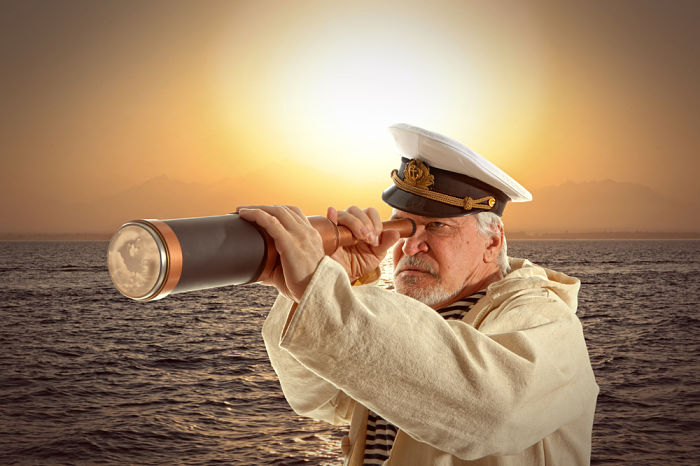
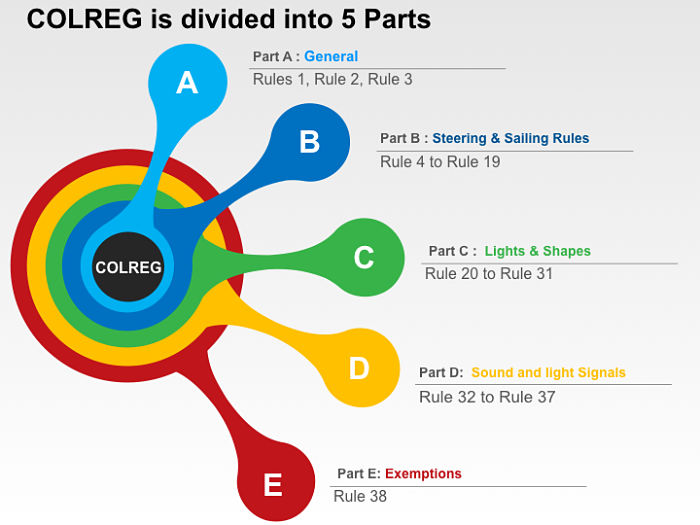
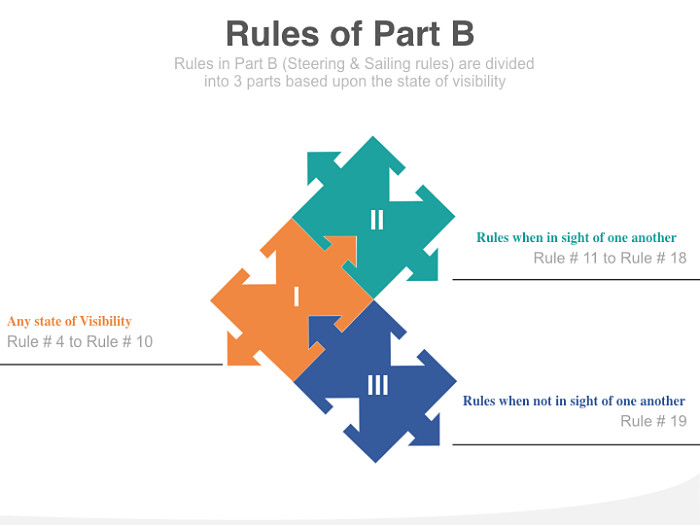
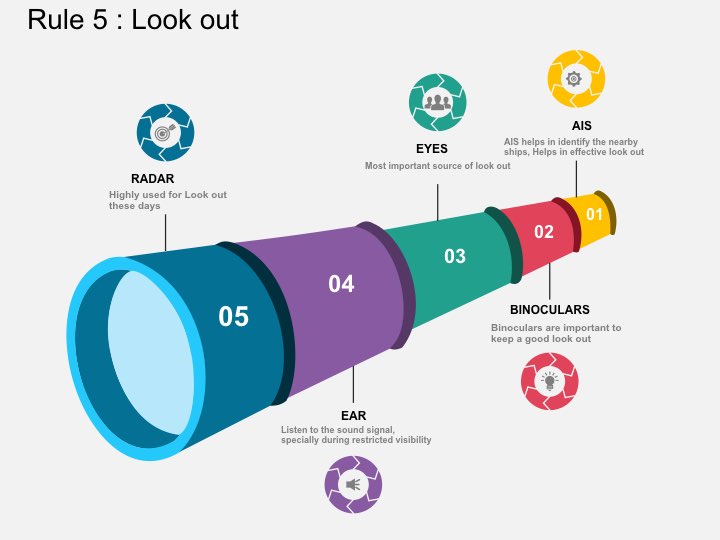
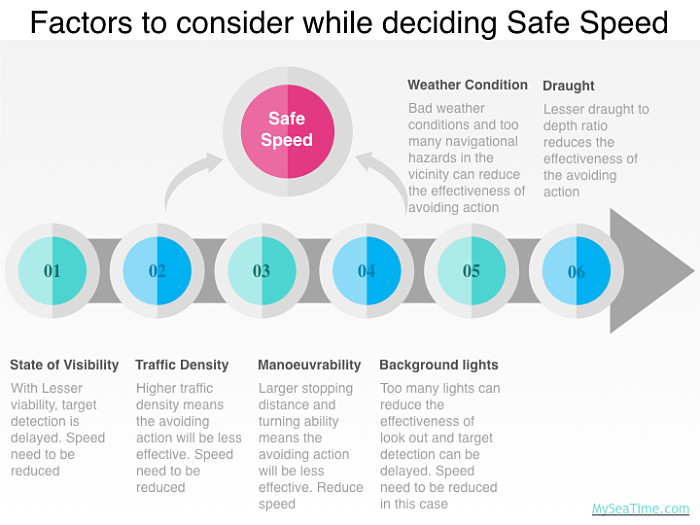
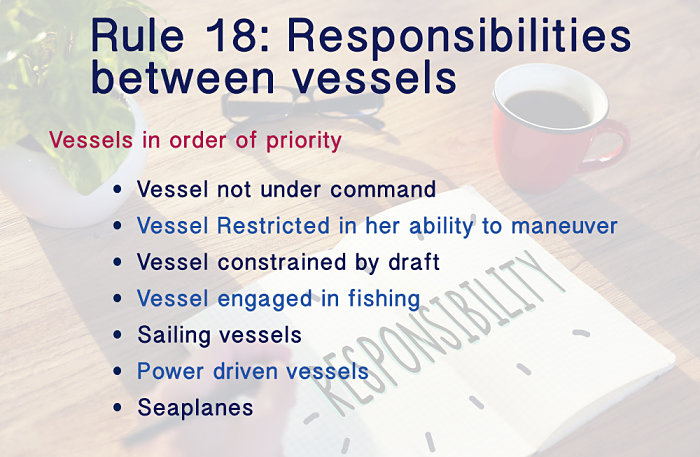
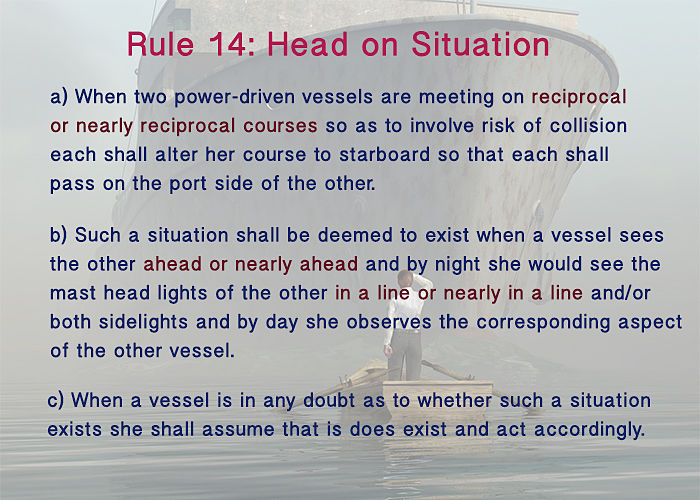
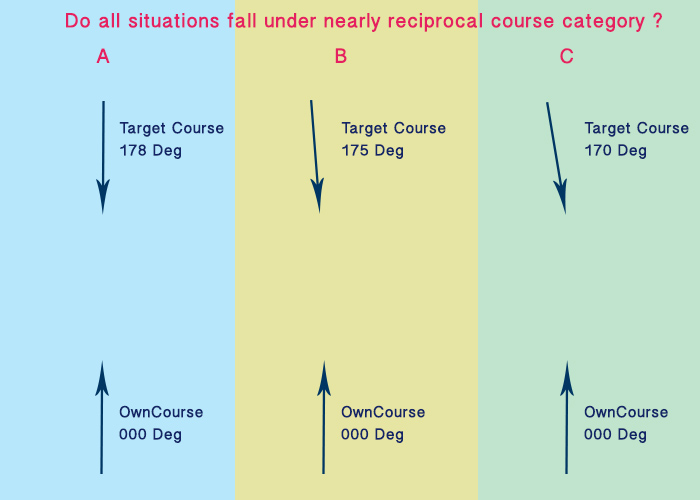
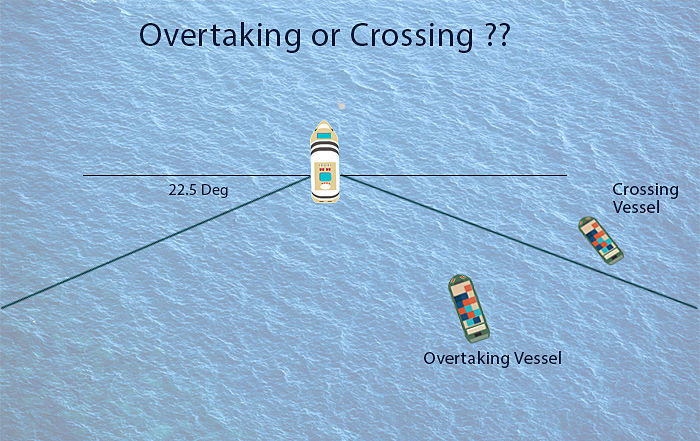
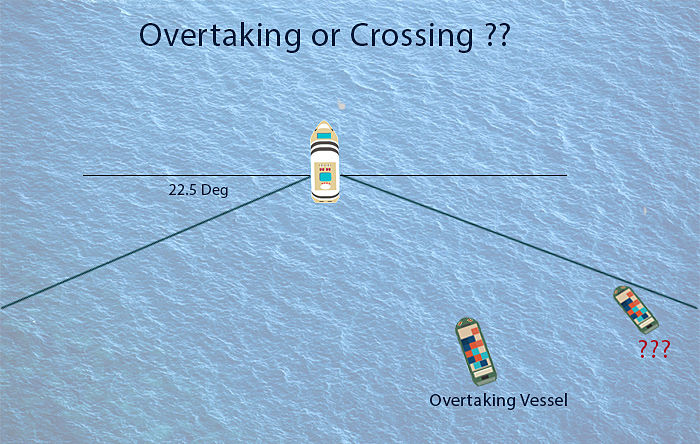
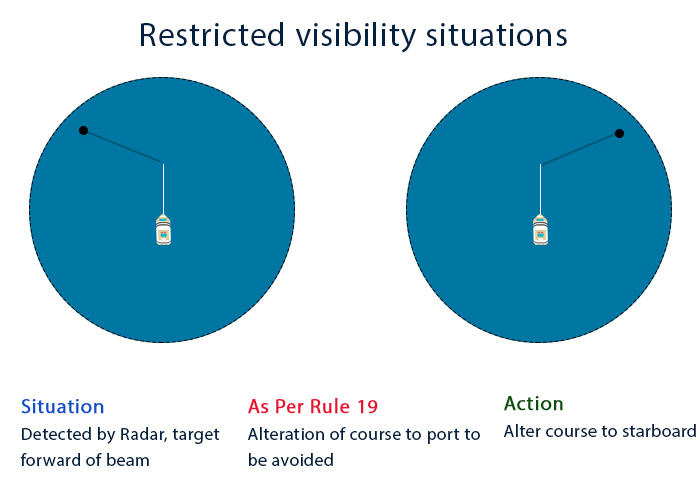
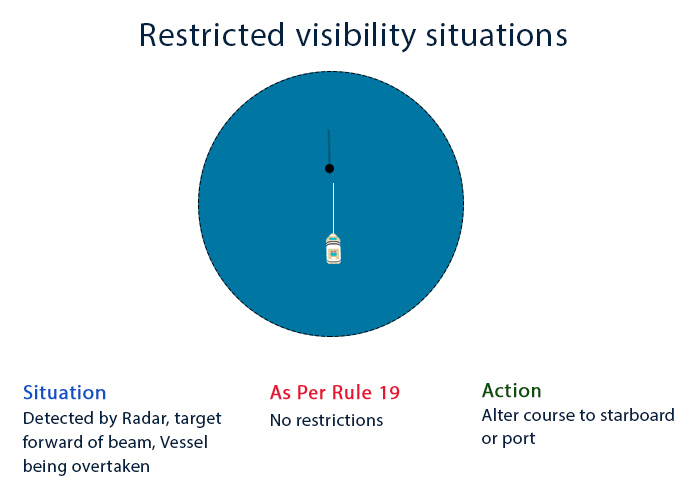
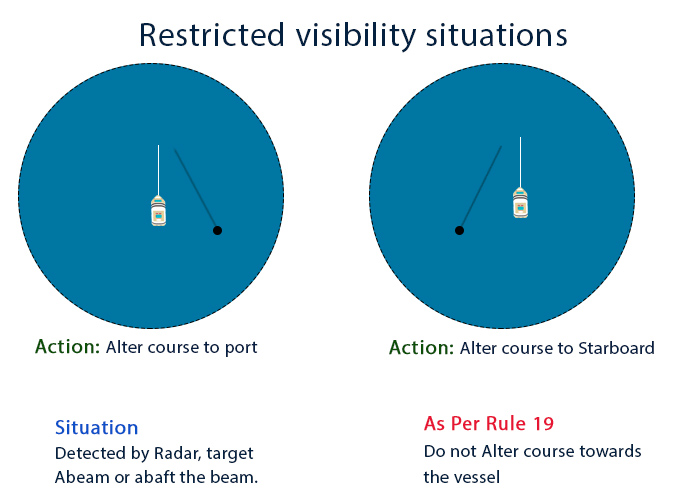
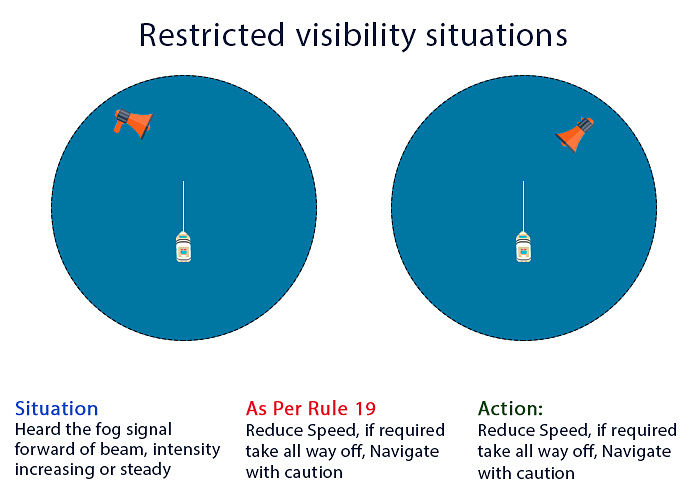
Good explanation of COLGEGS giving examples..making the understanding easier..would love to read more of these
Glad you liked it Ansel..